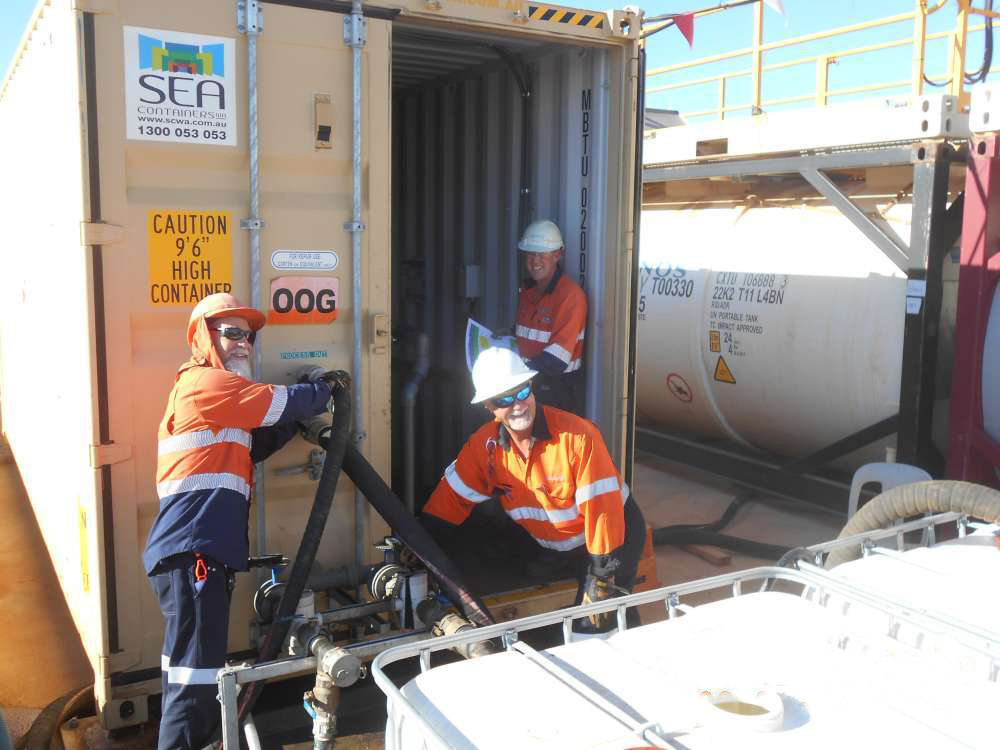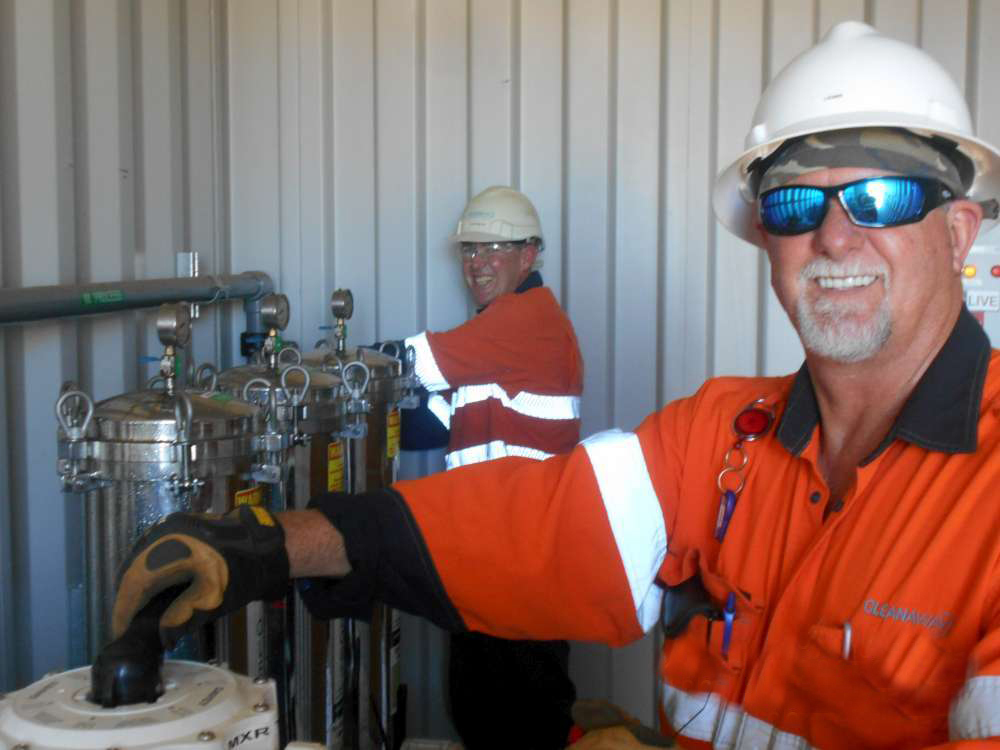Development, construction, operation and maintenance of the WWFU brought expertise together from many organisations which ultimately was of great value to the environment at large.
Development, construction, operation and maintenance of the WWFU brought expertise together from many organisations which ultimately was of great value to the environment at large.
The Cleanaway team co-developed an onsite filtration plant for our customer in the oil and gas industry, to treat contaminated water that reduced operating costs by an estimated $1.5 million each year. We provide the customer with a comprehensive waste management service including the collection, processing, treatment and disposal of all solid waste, recycling and liquid waste.
The most common by-product from our customer’s operations is oily water that is vacuumed by Cleanaway from various locations. Prior to the filtration plant, tonnes of wastewater had to be shipped for treatment and disposal, due to strict environmental controls that prohibits any tipping of water by-product on location.
The offsite disposal process was costly and involved complex logistics with Cleanaway filling Isotainers (large sealed containers used in shipping) with contaminated water, then working with suppliers to move the containers to the wharf, load them onto a vessel and ship to Cleanaway’s holding yard or to other approved disposal sites.
How the onsite filtration plant was built
In the early stages, Cleanaway assisted with building a heavy-duty concrete bund needed to accommodate the wastewater filtration unit.
Cleanaway HSE Advisor Project Lead Robert Te explained, “Specialised containers designed to hold wastewater had to be positioned within the bund including three 1,000 litre Intermediate Bulk Containers (IBC) to hold clean tap water for back-flushing and rinsing the eight filters involved in the cleaning process.”

Pictured: Cleanaway operators connecting transfer hoses to a specialised container
The filtration unit was designed by a water treatment systems expert. The unit is made up of a series of vessels including a bag filter, sand filter and filter unit. These vessels treat oily water by filtering it into its smallest particles or droplets. By the time the wastewater goes through the filtration process, it looks clear, quite unlike the black water it started as.
The filtered water is then tested to confirm the quality of the water. Once the correct purity is reached, the water is then safely disposed of on the island. If the second filtration does not get the wastewater to the level required, it is then transported to the mainland for disposal.

Pictured: Cameron and Lindsay with the wastewater filtration units
Once the onsite filtration unit was assembled, Robert and Cleanaway Operators Fiona Rees and Paul Grantham developed a comprehensive Safe Working Instruction (SWI) guide on how to use the unit safely and effectively.
Robert explained, “While some documentation was available on how the filtration unit worked, nothing existed on how to operate it safely and efficiently. Gauges on the filtration unit also have to be carefully monitored for leakages.”
“Our operators have shown great initiative throughout the development of this solution and they will continue to improve the SWI document as they work on the unit.”

Pictured: Operators Cameron and Lindsay inspecting the valves and gauges on the water filtration units
The use of the wastewater filtration unit by Cleanaway is much more environmentally friendly than transporting hundreds of tonnes of contaminated, oily waste to the mainland and has reduced operating costs by $1.5 million annually. Cleanaway estimates a waste disposal savings of $200 per tonne not including additional equipment, labour and transport costs.
We were also able to use our staff more efficiently by having our vacuum truck operators operate the filtration plant on rotation. For Cleanaway personnel it offers a varied task amongst the many through which they are rotated over their 2-week FIFO swing. As the unit requires two personnel to operate it most of the time, with a limited number of operators, efficiencies were identified by the branch in combing vacuum truck operators with the filtration unit.
Robert said the “development, construction, operation and maintenance of the waste water filtration unit had brought expertise together from many organisations which ultimately was of great value to the environment at large”.
Contact us to learn more about our comprehensive oil recycling, wastewater and resource recovery solutions for businesses and industry.